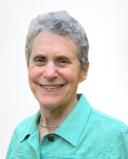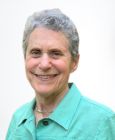Identity
Double Vision: Searching for Sight in the Desert
A Personal Perspective: Making peace with vision loss.
Updated June 23, 2023 Reviewed by Ray Parker
Key points
- Losing vision is a process of coming to appreciate a new reality that combines the seen and the unseen.
- Blindness illuminates the inner nature of sight.
- “Your world is not made up simply of what you can see with your eyes,” I reminded myself.
As we drove through the southern New Mexico desert, a sense of double vision haunted me. I felt I was seeing not only the landscape outside my car window—blurred now and murky—but also what had come before when I had more sight, and that was what the landscape was supposed to look like. I yearned to see with clarity all the details that were now missing. At the same time, I knew that this darker, murkier, more subdued view was my vision now—and would be until it changed again and got even darker.
As we headed south toward remote plains and mountains, I stared out at the surrounding desert as if it would orient me to the new life I was seeking. I looked into the rocky slopes of a pass and saw hulking brown shapes of cliffs and ravines where the road dipped down and then up again. I wondered if the brownness of what I was seeing was an entryway into a brighter future farther south or a warning—that more brownness was yet to appear.
We stopped that day at a roadside chile stand where plump red chile ristras were hanging under the eaves. As I got out of the car, my partner Hannah offered to come along to help me since the interior of the shop would be dark, but I declined. I felt brave taking my life into my hands, confronting the world of blurred vision, and interacting with strangers without Hannah’s help. I followed my white cane up to the shop.
Fortunately, the packages of red chile, salsas, pecans, and spices were laid out on tables in front of the small store, so I did not have to worry about Coronavirus exposure in the interior. What I had to worry about was my increasingly limited sight. I had to ask the saleswoman to help me. “What does this ristra look like?” I asked about the drying chile pepper pods. “Is it a good one?”
“Yes, very good. And here’s another like it,” she said with a lilting New Mexican-Hispanic accent, which I liked so much that it always warms my heart. It takes me back to a time when I was young and a woman I wished to have stayed with me forever was then very deep in my affections.
“I’ll take your voice,” I wanted to say to the sales clerk. But instead, I said, “I’ll take those two ristras.”
“They’re still wet,” she added. “They’re very fresh.”
I touched the moist skins, put my nose up to the ristras, and inhaled the scent—sweet and rich—the strung chile pods smelling as deep red as they looked.
I bought biscochitos, chile powders, and the ristras and walked back toward our car in the parking lot where Hannah was waiting.
“I got everything,” I told her.
“Did you feel safe?”
“I did.”
Farther along, having driven miles through broad chile fields and empty fields, past windmills on windfarms, their white blades spinning in the sky, past the Middle of Nowhere Bar and Café, past the place where the white, border patrol trucks that used to pass us regularly on that long, straight road because it was so near the Mexican border—I noticed that, this time, the white border trucks did not seem to be present.
“Where is the border patrol?” I asked Hannah. “We usually see them on this road.”
“Maybe they don’t need to drive by with their trucks now,” she suggested. “They have so much electronic equipment, they don’t need to do surveillance with the trucks as much.”
Again, the absence was a presence for me. The white, border vehicles were no longer there but present in my mind as if they ought to be there. And again, I was seeing them from my past and, surprisingly, missing them. In this borderland, it is often hard to tell what “is” from what “is not,” I thought. The desert keeps secrets, hides so much, and washes the past away with a sweep of sand and dust, much as my failing eyesight does.
As we drove on, I commented to Hannah about how murky the landscape looked to me—how the fields once bright straw-colored tan, covered with dry grasses, seem hazy and dull now, less scintillating, less exciting than before. I looked up into the blue, blue sky in search of clouds—the kind of clouds I like and remembered always seeing on this road heading west and south in this part of the never-ending desert—surrounded in the distance in all directions by mountains, their majestic, jagged shapes dotting the plains.
“There are no billowing white clouds in the sky today,” I said to Hannah mournfully.
“Maybe there will be some later. Things change quickly here,” she reminded me. “Don’t give up hope.”
I saw then, in my mind, images from photos I had taken in past years that showed voluminous clouds resplendent against the blue sky—a towering cascade of thick, fluffy whiteness above the dark shape of my favorite mountain, Big Hatchet. I saw those clouds as I once had seen them and as they had looked in my pictures and hoped to see them again in this very same sky. But today it only produced the thinner veils of clouds. I wondered if there would be again a moment when the sky would shock me with its display of something that would make me forget—and not mourn—what I could not see.
“Your world is not made up simply of what you can see with your eyes,” I reminded myself as we drove on, as I looked out at my surroundings and searched within them for a clarity I missed, and as I searched within myself for a new way to construct what I would be experiencing as I traveled. How might I make peace with my new reality—the fading of the clarity, the absences that were still presences for me? I hoped that my visions in the future would be as beautiful as those I was losing.




